The National Gallery in London: Where to Start?
Having lived in London for the past three years as an art lover, I have had more than my fair share of questions about where to “start” at the...
Sophie Pell 3 February 2025
The global pandemic forced museums around the world to close their doors for several months. Later, many were permitted to reopen with new pandemic safety protocols in place. However, a second round of closures has recently swept across a number of major cities. As compensation and to fill the void felt by many, art institutions now offer virtual tours of exhibitions. They have also offered increased online access to their collections. Many are thankful for that alternative but, in my opinion, nothing compares with visiting a museum in person.
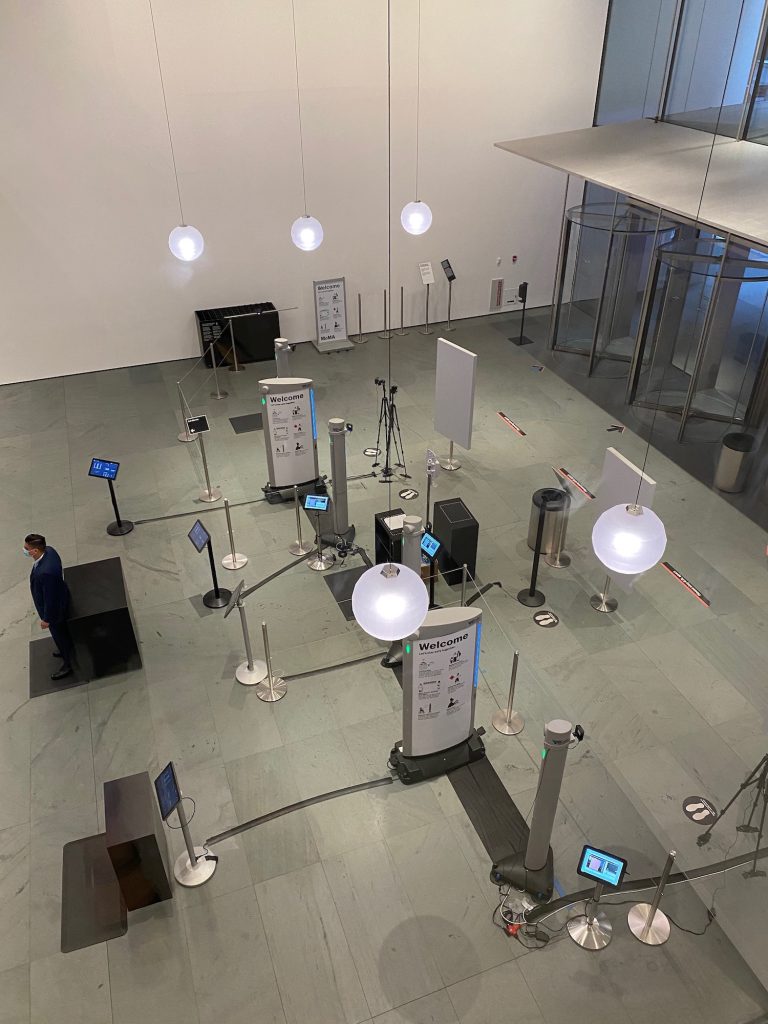
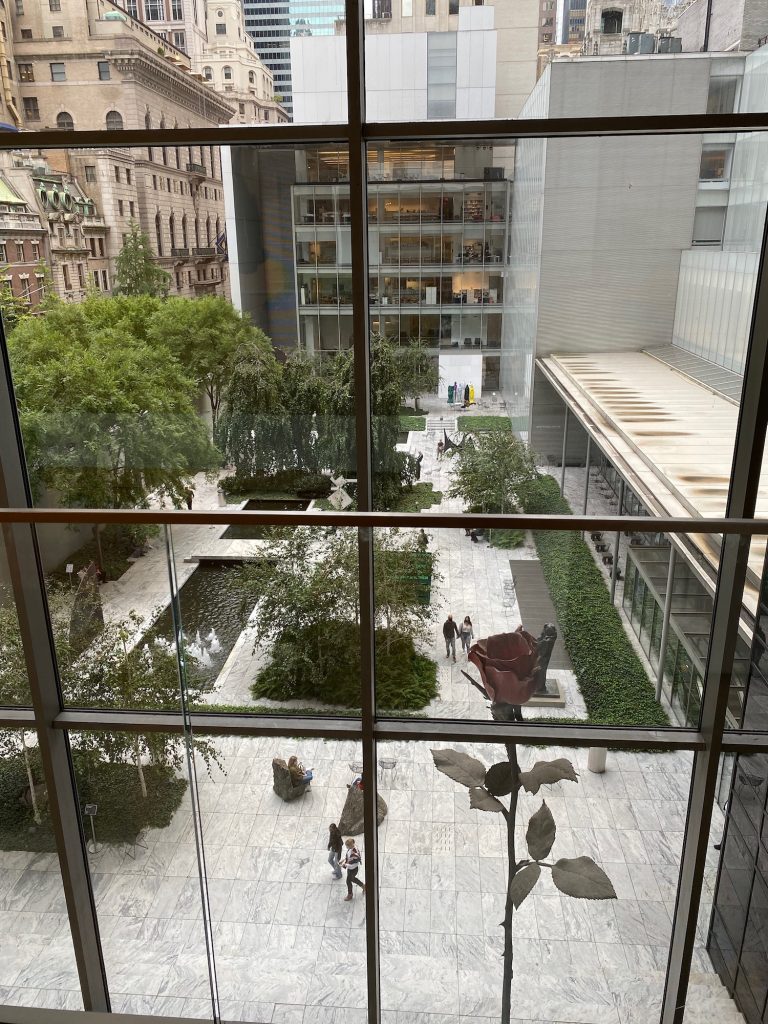
Upon reopening, museums have taken several measures to protect their staff and the public. They now require the public to make reservations ahead of time and to wear masks at all times. Hand sanitizer stations are now available throughout the museum and plexiglass barriers have been installed to protect staff members. QR codes are available in place of brochures and visitors receive temperature checks prior to entry. However, the reduction of crowds to ensure social distancing has been an unexpected perk. For some that has enhanced the experience of visiting a museum. Quieter and with more room to contemplate, the interior spaces of art museums are safe, familiar and comforting.
For many, this pandemic took us by surprise and turned our worlds upside down. It has certainly gone on far longer than anyone expected. Here are several accounts of returning to museums once restrictions had eased. I begin with my experiences in New York City. I will then follow with contributions from other DailyArt Magazine writers from different locations around the world.
New York City museums reopened to the public in early September. This was about a month after those in other parts of the state, including Dia Beacon, were permitted to open. Once the doors of art institutions started opening across the five boroughs, art lovers were overjoyed to return to the cherished art spaces that shape and reflect this city’s rich culture. In the span of three months, I visited over a dozen museums and numerous galleries. It was a race to see as much art as possible after months of waiting. However, I was also keenly aware that these institutions could be forced to shut down at any moment.
The new guidelines for public spaces presented minor challenges that were easy to work. One was the loss of being able to pop spontaneously into a museum whilst out and about. Another was relying on their cafes to get a snack or meal as all indoor eating options in museums remain closed. However, reserving tickets online has been a fairly simple procedure. For those looking to pair their museum visits with nearby eating options, online resources such as Artivore offer creative itineraries across the five boroughs.
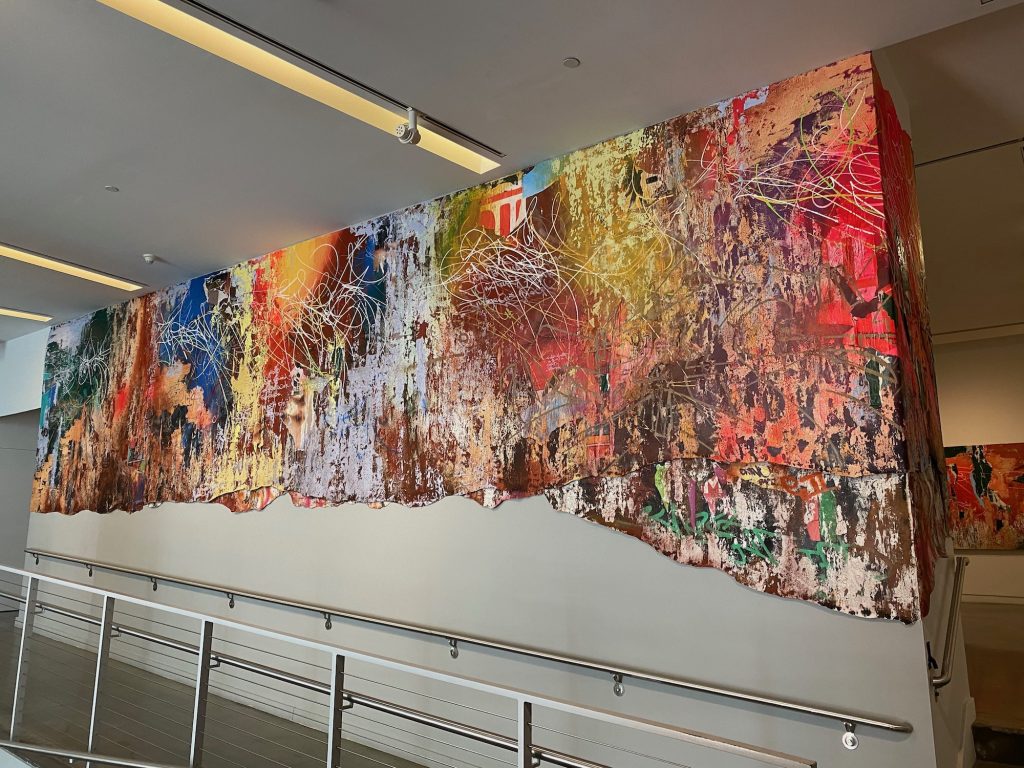
The global pandemic has devastated the economy. Unemployment has skyrocketed and small businesses are suffering. As a result certain sectors have shut down indefinitely or face severely reduce operations. Many have been unable to keep up with their monthly expenses. Some even face eviction. Others have had to deal with food insecurity and with no end in sight. Museums in New York have not been immune to these dismal circumstances. There were massive layoffs and furloughs of museum staff members, mainly BIPOC. This has affected many of those who held lower positions at museums, primarily maintenance, security and front desk workers. And this happened despite the precarious financial situation faced by this underpaid and under-appreciated workforce.
This past summer, the Black Lives Matter movement heightened our awareness of institutionalized racism. The pandemic has further exasperated the injustices that plague the U.S. and disproportionately impact black and brown populations. BLM and cancel culture threw a spotlight on the problems affecting all sectors. This included the art institutions of New York City. Beloved as they may be, these museums were guilty of incomprehensible salary inequities and administrative mismanagement. In addition they were guilty of the underrepresentation of artists of color. As well as this there were many examples of corrupt collection practices and problematic financial connections to corporations profiting from the status quo.
The institutionalized injustices that have impacted the inner workings of New York museums did not come as a surprise. Public outcry has reached new levels through highly effective social media campaigns that make it difficult for institutions to ignore. During the pandemic, it has become clear that even though we may cherish the art institutions throughout the city of New York, “business as usual” is no longer acceptable.
Against the backdrop of the pandemic and the political turmoil unfolding in real time and despite the controversies swirling around many museums, many relevant exhibitions were there to be seen. I returned to these familiar places feeling euphoric but armed with a heightened sense of awareness.
Lines stretched down the block to enter the Metropolitan Museum of Art for its opening weekend in September. However, we were able to bypass the crowds by entering through the garage on the lower level. It was remarkable to walk through this normally crowded museum without feeling cramped.
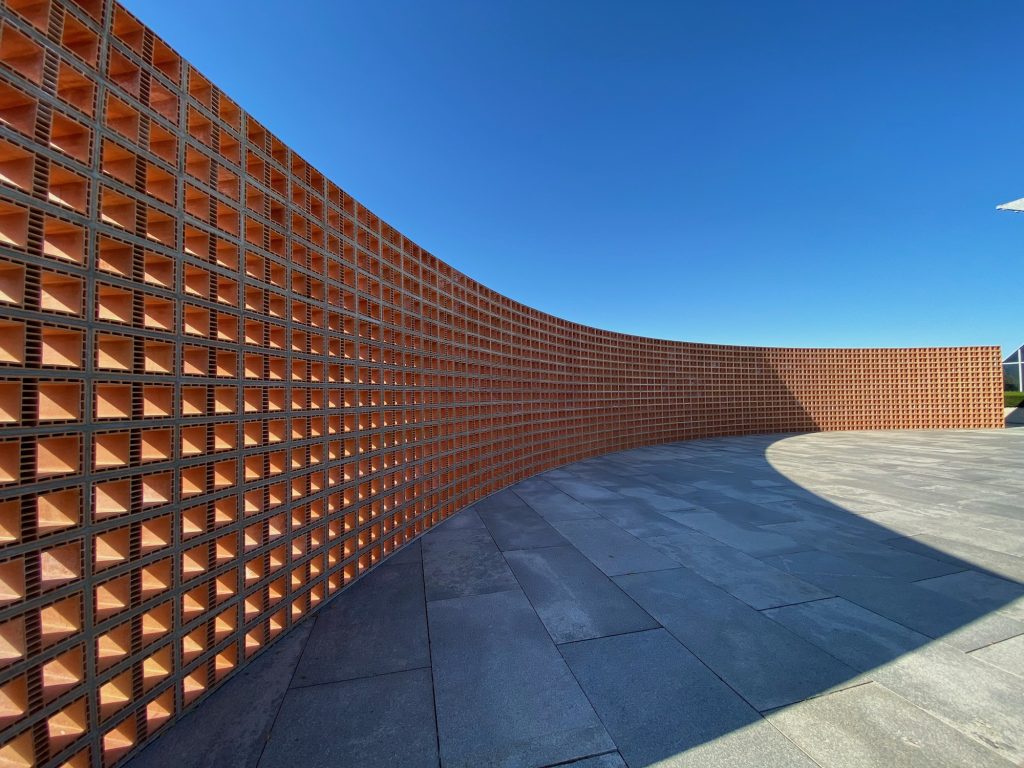
Many were drawn to the rooftop garden to see Héctor Zamora’s monumental installation, Lattice Detour. It had been in mid-production when museums were ordered to shutdown in March. In this magnificent outdoor space overlooking Central Park, Zamora’s wall stood in all its glory. Pristine, uniform and arranged along a gentle curve that cut through, it did not enclose this open space. While there is an obvious reference to the wall between the U.S. and Mexico, Zamora’s wall felt liberating. One could look or reach through, walk around and feel the natural vibrations of our beautiful city slowly coming back to life.
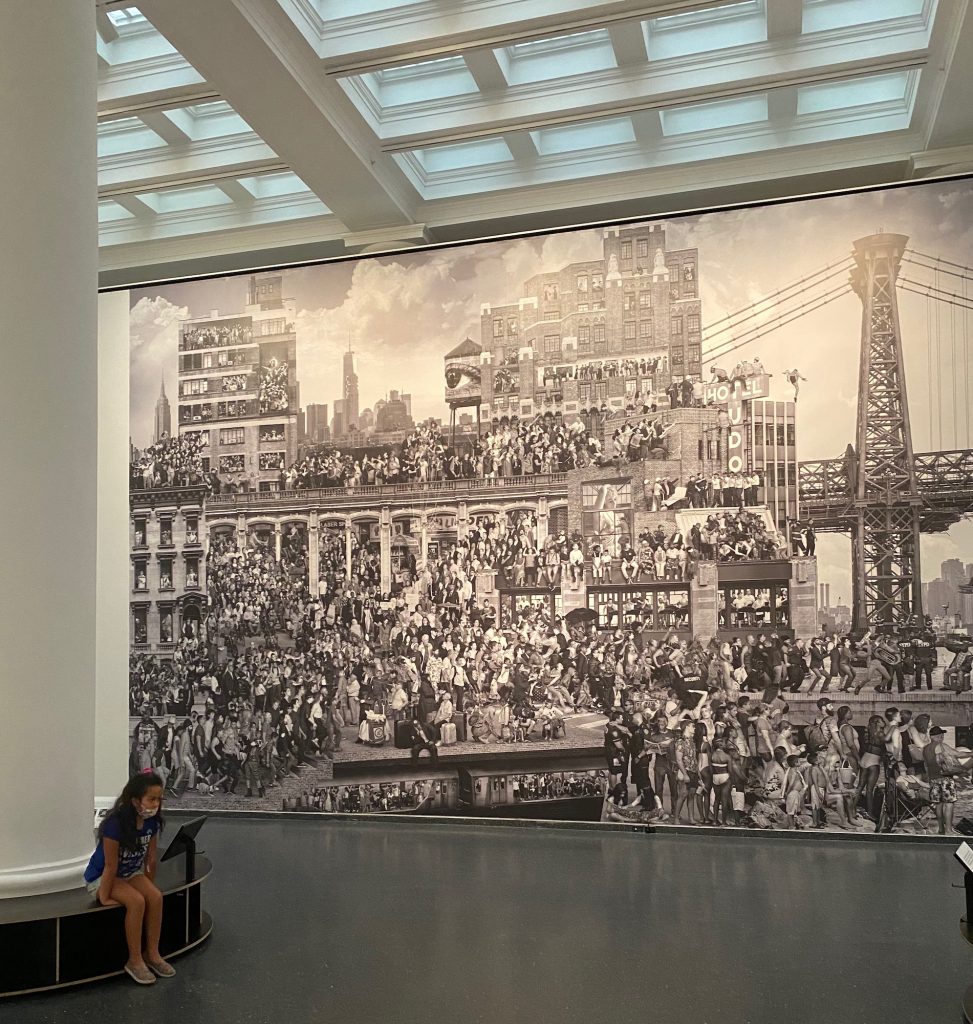
Don’t overlook the outer boroughs! In particular, the Brooklyn Museum’s retrospective of the French, political, street activist and artist JR. JR’s mural-sized presentations of people photographed individually and arranged into layered, urban and crowded settings stood in contrast to the empty galleries where I stood by myself. One can only wonder when it will be safe to comfortably gather in public again. However, this exhibition was a reminder that there was a time when it was okay to be among many.
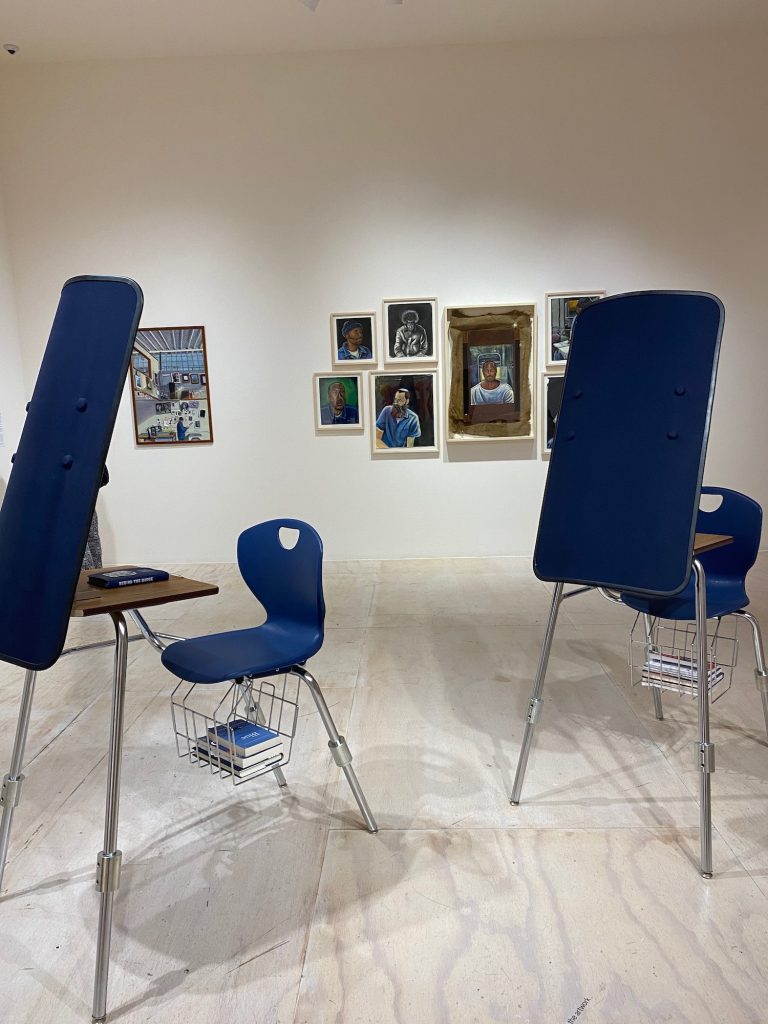
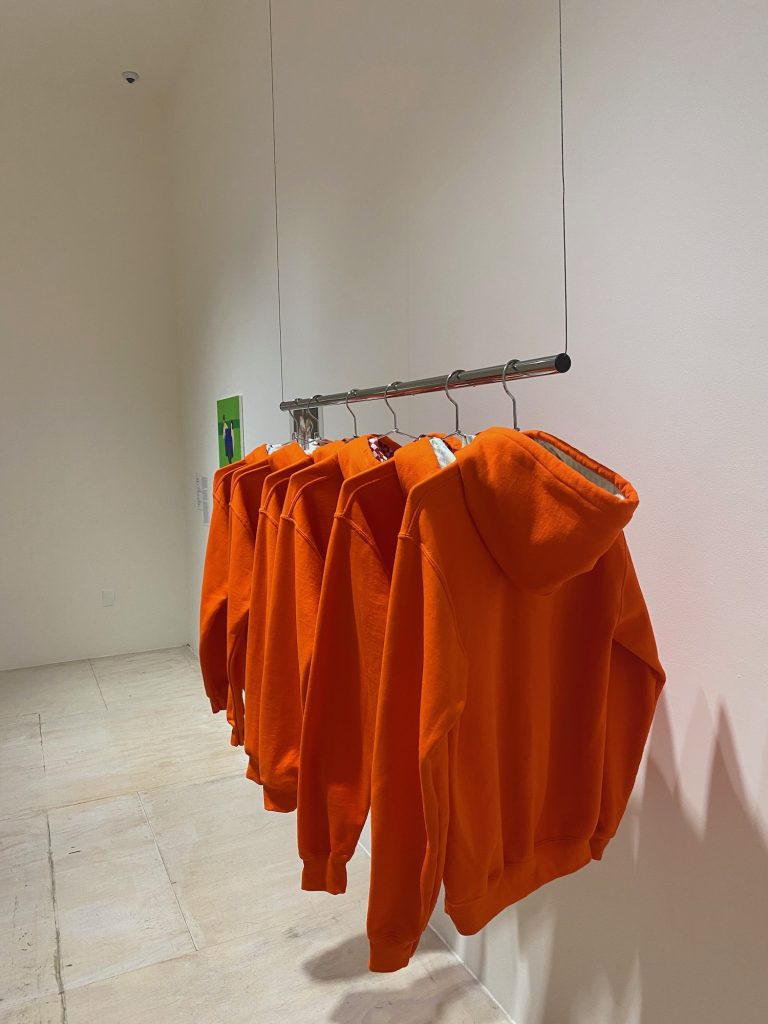
Marking Time: Art in the Age of Mass Incarceration at MoMA PS1 in Long Island City, Queens, did not miss the opportunity to make reference to the presence of the virus within prisons. Already faced with poor living conditions, prisoners were inadequately protected by a system ill-equipped to stop the spread of the virus. Many of us felt trapped in our homes and restricted by the stay-at-home order. Yet these compromises are nothing compared to that of incarcerated individuals. This exhibition stood out because it tackled an unpleasant topic that many would prefer remained hidden. This country is steeped in racism, a pandemic that has systematically oppresses Black, indigenous and other people of color from the time of slavery through to today. I was most thankful to be confronted by the harsh realities of this exhibition. It really resonated with the uncertainties of these times.
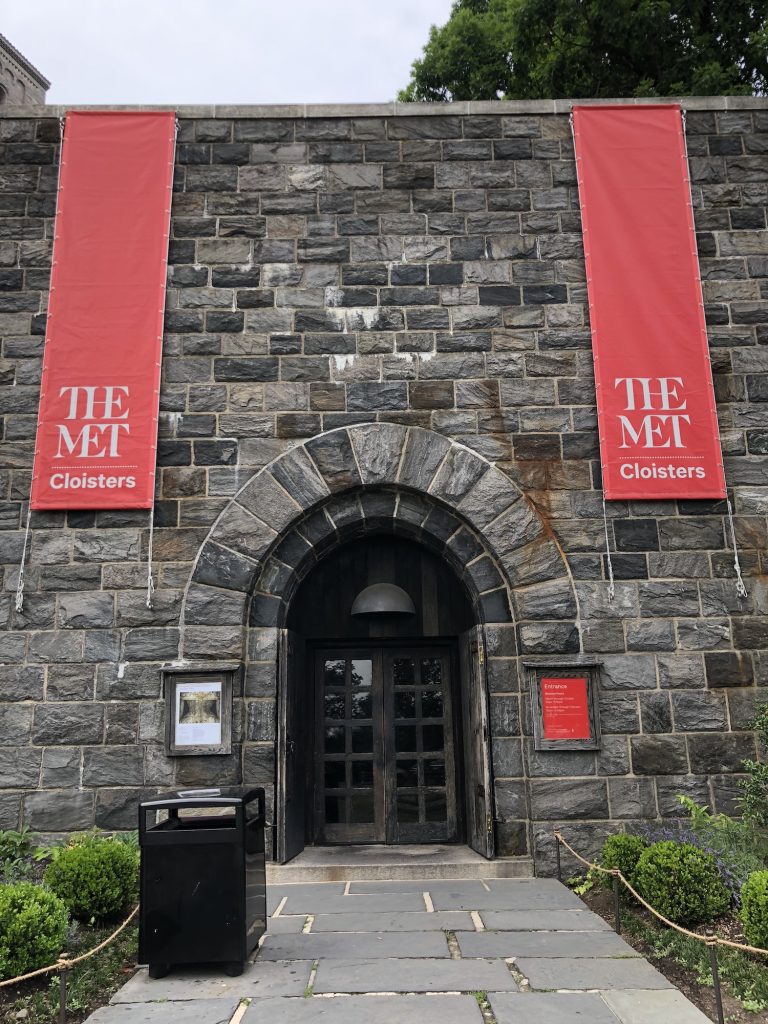
I’ve been hesitant to visit museums during the pandemic. The reason for this is because I don’t want to take public transportation into New York City. (Unfortunately, all of my favorite non-city museums remain closed.) Finally, I decided to visit the Met Cloisters. It’s easy to drive to upper Manhattan, and the museum tends to be quieter than the Met’s main building. I love medieval art, so I’m always happy to visit the Cloisters. As a museum member, I reserved a time slot online and then showed my membership card upon arrival.
Like the rest of New York’s museums, the Cloisters currently only allows 25 percent of its usual capacity. However, I don’t think the maximum number of people were present during my Sunday morning visit. It was nice and quiet, which made for great museum browsing. In addition, people were very respectful of each other. They kept their distance and shared the space and the artworks. In reality only one person can safely enjoy each object at a time.
All visitors have to follow a preset path, indicated by arrows on the floor, from gallery to gallery. You can spend as much time as you want in each room, but you can’t go back once you’ve moved on. I had a brief wait to enter the Unicorn Tapestries room. Currently this has a limited occupancy of only ten visitors at a time. However, the wait was very minor. It was easy to stay far away from people and equally easy to enjoy the art. There were hand sanitizer dispensers throughout the museum. This was helpful, since the Cloisters has a few doors you have to open. At no point did I feel unsafe. On the contrary, my experience was lovely!
I’m used to spending a lot of time in art museums, yet I hadn’t been to one in about ten months. I found that I enjoyed and appreciated this visit so much more than I’ve done in a very long time. It was actually really refreshing.
By Abreeza Thomas

When the pandemic originally began in 2020, the state art museum, the Mississippi Museum of Art, was due to host part of the Mellon collection of Impressionist works. Then everything closed. However, we all hoped a deal might mean the exhibition could remain long enough for all of us to see it.
At last, after daydreaming and talking about going for months, we finally made the journey to Jackson. In particular, we wanted to see the likes of Renoir, Degas, Monet, Morisot, and Bonnard – just to name a few. It was the week after Christmas so we thought the museum might be fairly quiet. However, since the exhibition was only scheduled to stay open another couple of weeks, quite a few people were there.
Of course, all museum staff were wearing masks. The front desk had plexiglass panels in golden frames as a barrier between guests and workers. I thought this was a nice touch! We paid our admission fees and were asked to wait in the lobby until it cleared out a bit. After about 10 minutes, we were allowed to make our way to the gallery. An attendant stationed at the desk monitored how many people were in the space at once. I thought this was perfect. Museum visitors were also doing their best to be mindful of social distancing throughout the exhibit.
All in all, it was an enjoyable experience. In fact, it didn’t stray too far from what one would normally expect in a museum.
By Amélie Pascutto
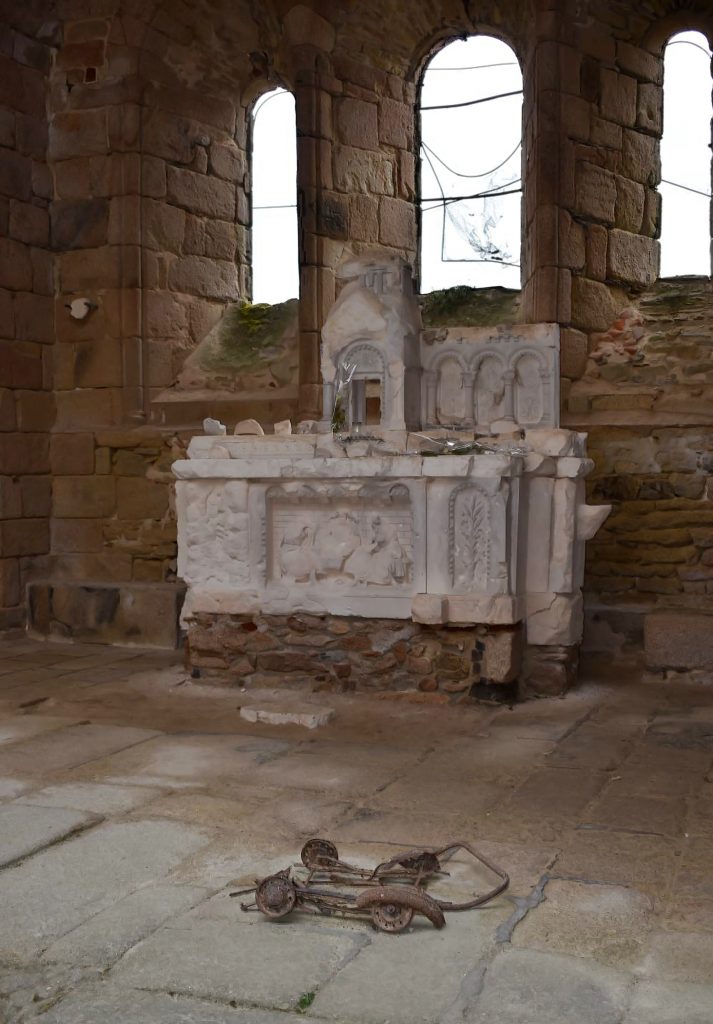
Nothing’s changed, bad things still happen
Despite the worldwide breakdown, my family still held its traditional summer reunion. For a week a two, we come together at my grandparents’ house. We usually have rich food during never-ending meals. In addition, we have long political debates, and play card games. But, in this busy program, cultural expeditions play a key part. This is how four generations of family members went to visit Oradour-sur-Glane, Nouvelle-Aquitaine, France.
Oradour-sur-Glane is not a museum per se, but a memorial site. More precisely, during World War II, Oradour-sur-Glane was destroyed and all its inhabitants massacred by the Nazis. However, the French government carefully preserved the ruins. Now they leave it open to the public so that, in the words of General de Gaulle, “a place like this remains […] something where everyone recognizes the common misfortune, the common will and the common hope”. In this kind of place, there is no need to remind the visitor of the basic museums’ rules. With or without COVID, people leave each other enough space and don’t touch anything. Everyone was perfectly respectful, young and old alike.
At one point, I found a mask on the ground, alone, right in the middle of the pathway. It seemed odd at first; the bright surgical blue against the soft brown asphalt. While I often complain about the unease of having to breathe with a mask, I forgot I had one. I had just visited the church which the Nazis set on fire after locking up all the villagers inside. The picture of a rusty stroller next to the altar was still in my mind.
The atmosphere was so profound that COVID disappeared for a moment. I looked around; didn’t see anyone with an uncovered face. I picked up the mask and put it in my bag. That wasn’t a good barrier gesture. But at least it preserved the environment of these martyrs from the invasion of the present.
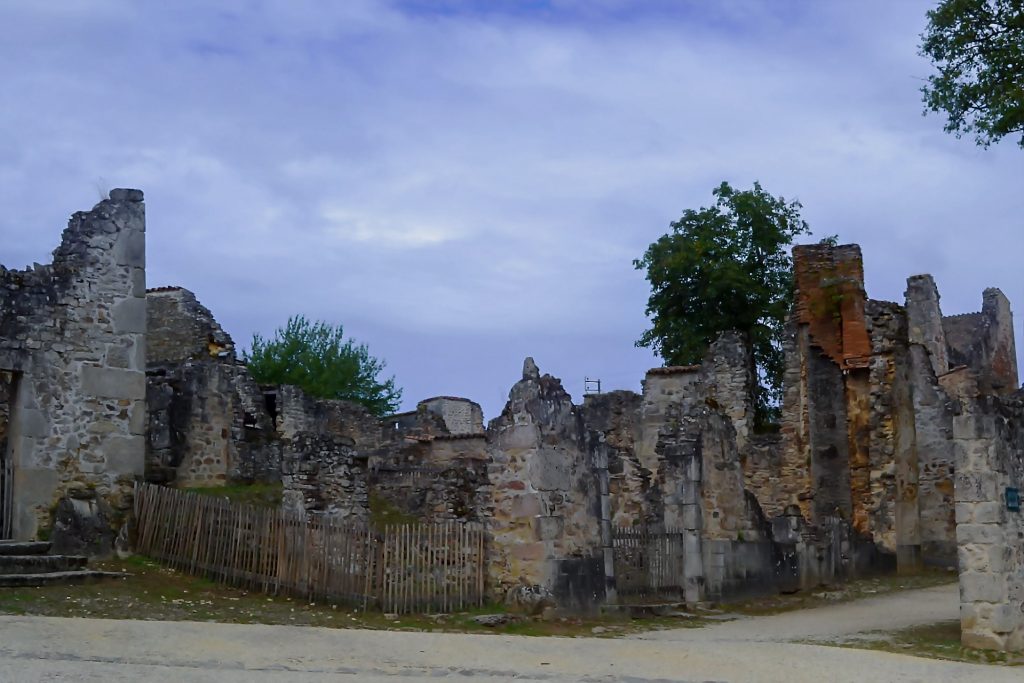
By Yasmin Ozkan
Last Summer I visited the Royal Academy’s Gauguin and the Impressionists exhibition in London. It was the first time I’d seen artworks in real life in months and I had mixed feelings about the experience. The exhibition itself was beautiful. Indeed, it was a pleasure to be able to see the true details of the paintings; the unique textures, hues and brushstrokes, intricacies that can never be truly captured virtually.
However, inevitably, I did find it a different viewing experience, less concerning the exhibition itself than the times we live in. The importance of self-awareness somewhat dimmed the visit. Whilst the artworks did engross me, soon after came the creeping awareness that I may not be two meters from the person next to me. I was also aware of the stuffiness underneath my mask. Visiting a gallery in the middle of a pandemic was bittersweet. Art’s power to illuminate in dark times is of great value, but not as valuable as being able to get lost in it.
By Zuzanna Stańska
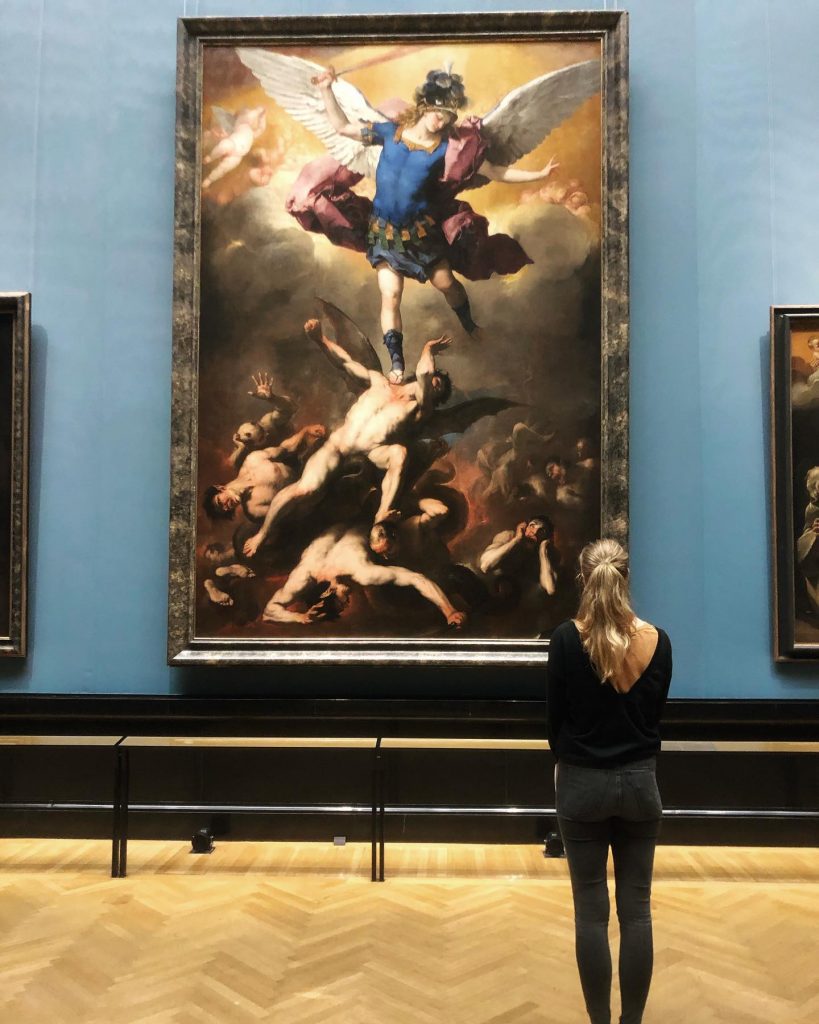
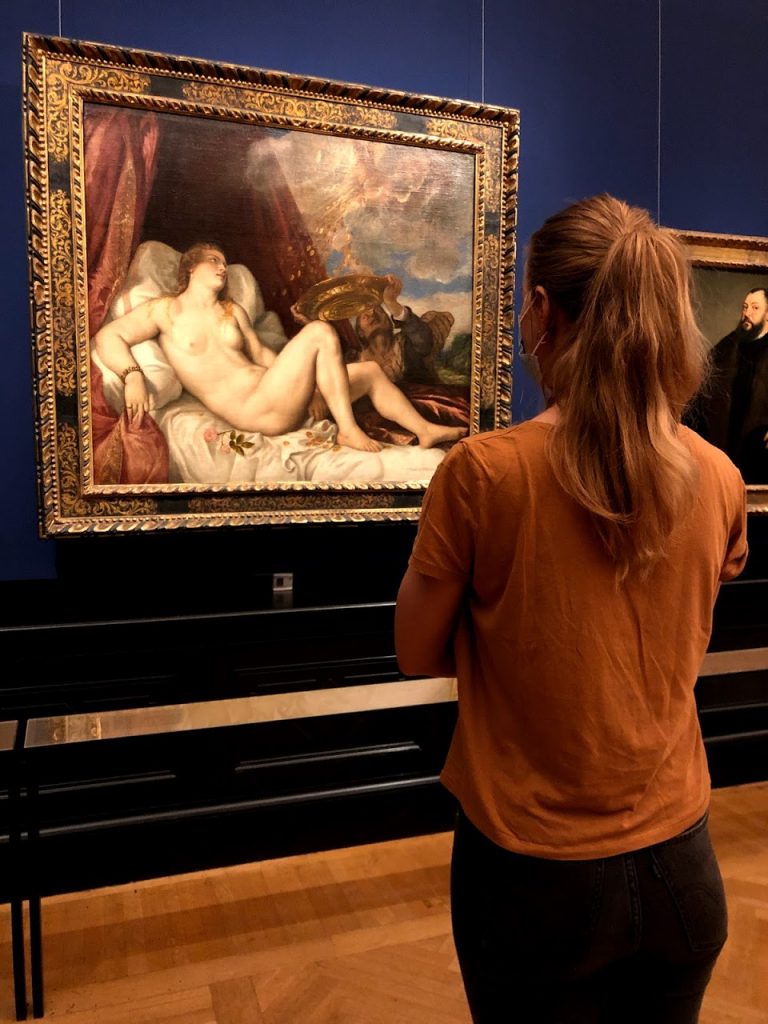
The thing I’ve missed the most during the COVID-19 lockdowns in 2020 was the museums. I even had dreams in which I was doing some heavy sightseeing in the most exciting European museums. Thus when I had a chance to go abroad and do a serious museum trip, like before 2020, I took it.
In the last days of September I went to Vienna. My biggest dream there was to visit Kunsthistorisches Museum, which I know by heart. But this didn’t matter! I always find its collection (the old masters!!!), the building – the whole 19th-century aura of this super museum extremely appealing. I don’t like crowds in the museums so the emptiness of the place was very calming. In some of the rooms, I was feeling like I was owning the place. It was a magnificent feeling, even with the obligatory face masks.
The museum had one temporary exhibition open, entitled Beethoven Moves. It was a homage to the famous composer. It was full of music and Beethoven artifacts, for example his notes and his ear-trumpet (Beethoven became deaf at the end of his life). But at the same time it was full of pieces of art. Some of these, thanks to the partnership with Kunsthistorisches Museum have been presented in DailyArt app.
The last part of the exhibition was particularly amazing. In the middle of the pandemic, with all the necessary precautionary measures taken, visitors were able to participate in the performance entitled This Joy created by Tino Sehgal. Here performing artists were turning Beethoven’s music into a fresh vocal and dancing interpretation. I felt safe because the museum claimed that they tested the performers every day. It was a very surreal glimpse of the regular life before covid. This 4-hour walk in the nearly deserted museum was one of my biggest pleasures of the last year. We really need the museums back in our lives, AS SOON AS POSSIBLE!
Here is the live tour through the exhibition: https://beethovenmoves.at/
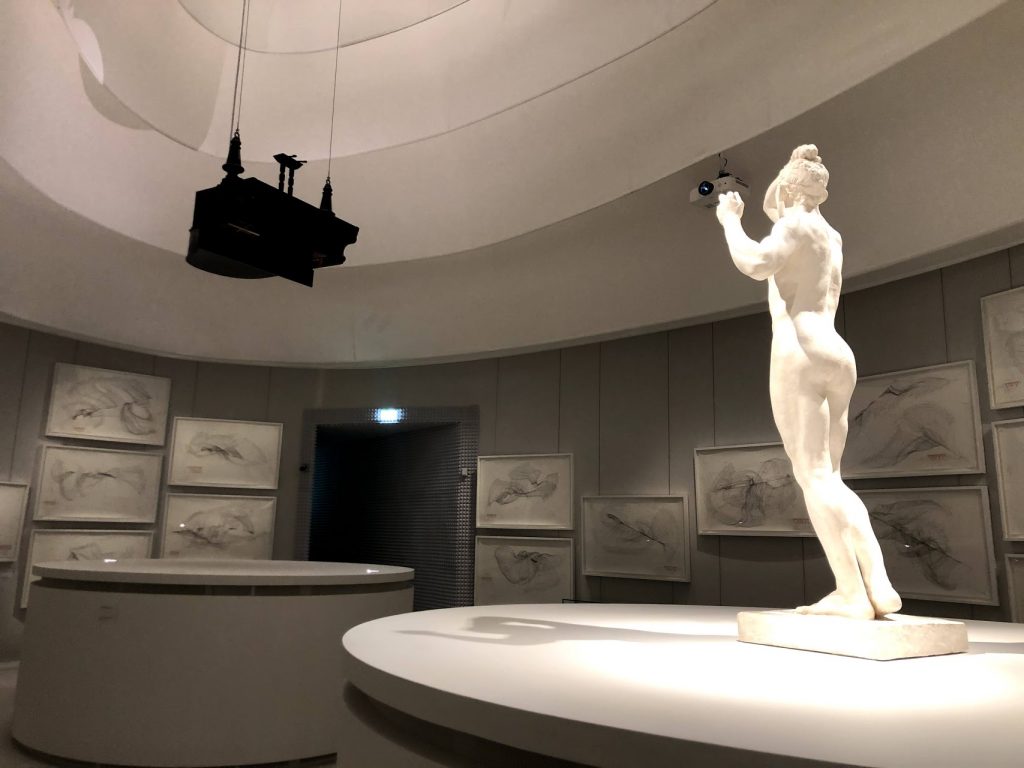
By Arianna Richetti
Italy was one of the first countries to be hit by the coronavirus last year. We experienced a very long and heavy lockdown between March and May. This was so that our hospitals could handle the difficult situation. However, during the summer, between the first and the second wave, there were few restrictions. Every business started again, including the cultural ones.
This was when we were able to visit the exhibition Andrea Mantegna – Making Antiquity Modern at Palazzo Madama in my city, Turin. We bought our tickets online because the number of visitors was restricted. I must say, it was nice skipping all those long and crowded queues for once. Before entering the palace the staff took our temperatures. They also gave us some hand sanitizer, and let us put our jackets and bags inside some lockers.
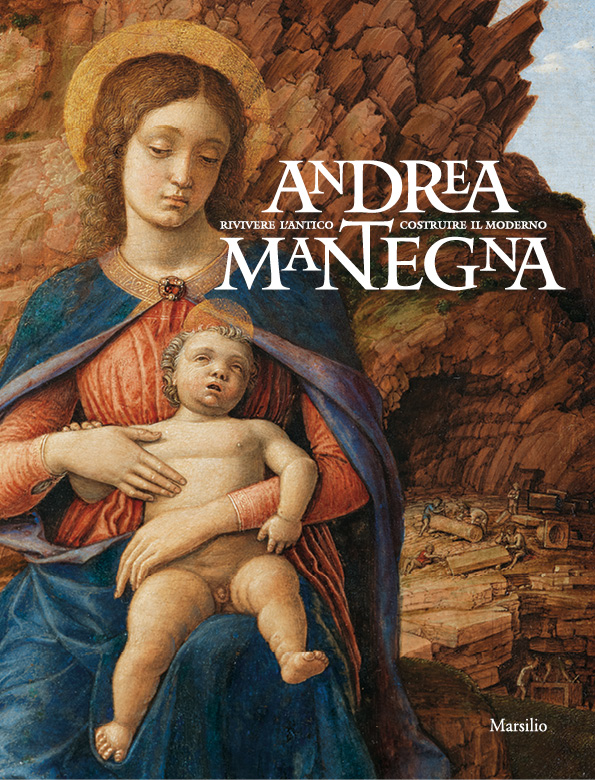
The exhibition started with multimedia projections of the Medieval Court of the palace. Here we learned about the artist’s life and the places where he worked. We also saw the artworks that could not be displayed. The large rooms of the Piano Nobile of the palace and the fact that Mantegna’s works were divided into six sections made the exhibition really enjoyable. As there was no crowd, we could read every description carefully. Also, we could contemplate every painting as long as we wanted in an almost religious silence.

We looked at works like the detached fresco from the Ovetari Chapel, displayed after a long time of restoration works. Significantly, we saw how Mantegna inspired and was inspired by the art of other Renaissance artists such as Giovanni Bellini, Paolo Uccello, or Donatello. Being able to do this in a quiet context made us really understand the innovations he had brought. We could also see how his passion for classical antiquity changed art history.
Right now our museums and art galleries are opening only in some regions and with many restrictions. However, we hope we will soon be able to make up for lost time and enjoy every exhibition we missed. We will certainly have a renewed awareness of the importance of culture in our lives.
DailyArt Magazine needs your support. Every contribution, however big or small, is very valuable for our future. Thanks to it, we will be able to sustain and grow the Magazine. Thank you for your help!